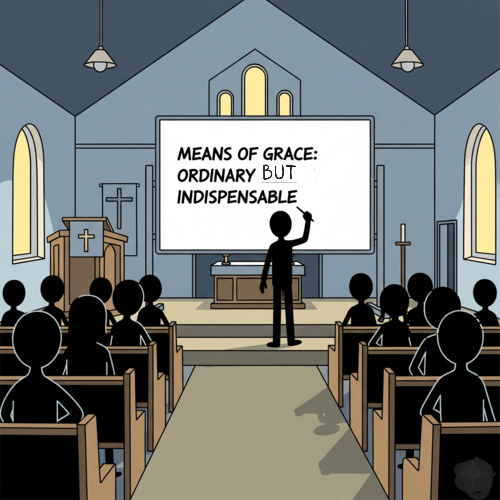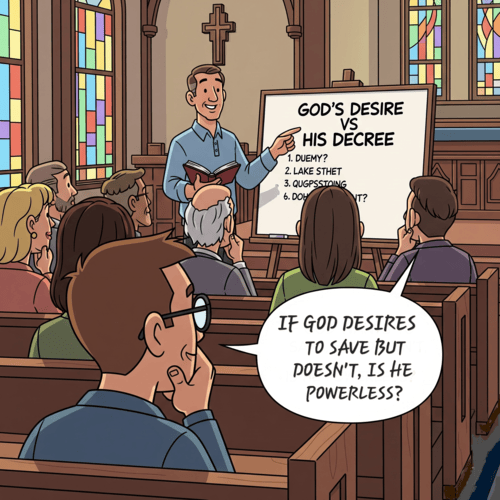Retributive Vs Restorative Justice: Which Does the Bible Affirm?
While retributive justice is focused on punishment and accountability, restorative justice is aimed at reconciliation and reinstatement. Come, explore justice perspectives in the Bible, which mentions both approaches…
Retributive vs. Restorative Justice: The Bible speaks to the tension between retributive justice—which is focused on punishment and accountability—and restorative justice that is aimed at reconciliation and restoring of strained relationships. While the Old Testament law outlined principles of equal retribution like “an eye for an eye” (Leviticus 24:20), the New Testament’s teachings on forgiveness and grace point toward a more restorative paradigm.While the Old Testament law included principles of proportional justice like ‘an eye for an eye’ (Leviticus 24:20), it also contained remarkable restorative elements like the Year of Jubilee, which mandated debt forgiveness and property restoration. The New Testament further developed these restorative themes through its emphasis on forgiveness and grace, while maintaining the need for accountability through teachings on church discipline and righteous judgment.
Jesus Himself embodied this restorative approach, offering mercy to sinners rather than condemnation (John 8:3-11). The apostle Paul instructs believers to “overcome evil with good” (Romans 12:21). Ultimately, the profound truth that despite our own moral failings, God has forgiven and restored us through Christ’s sacrifice (2 Corinthians 5:18-19), compels Christians to extend the same grace, forgiveness, and opportunity for redemptive restoration to those who have wronged us. The New Testament seems to emphasise that just as we have received unmerited favour, so too should we prioritise restorative justice over mere retribution whenever possible.
Retributive Justice in the Bible: The concept of retributive justice, which focuses on punishment and “an eye for an eye” mentality, is present in the Old Testament laws and teachings. For instance, the Mosaic Law stated, “If anyone injures his neighbour, whatever he has done must be done to him: fracture for fracture, eye for eye, tooth for tooth” (Leviticus 24:19-20). This principle of equal retribution was meant not only to maintain order in society, but also to to limit excessive punishment. The Old Testament law outlined principles like ‘an eye for an eye’ (Leviticus 24:20), which, importantly, was understood even in ancient times as a principle of proportional compensation rather than literal physical retribution. This legal framework was revolutionary for its time, replacing unlimited vengeance with measured, proportional justice.
Restorative Justice in the Bible: However, the New Testament emphasises a more restorative approach to justice, which prioritises reconciliation, healing, and the restoration of relationships. Jesus taught forgiveness, even for those who wrong us (Matthew 6:14-15, Luke 6:27-28). The apostle Paul instructed believers to “overcome evil with good” (Romans 12:17, 21).
Reconciliation and Redemption: The ultimate example of restorative justice is found in the sacrifice of Jesus Christ. Rather than demanding retribution for humanity’s sins, God provided a way for reconciliation and redemption through the atoning work of Christ on the cross (2 Corinthians 5:18-19). This act of grace and mercy offers restoration and a new beginning for those who repent and believe.
Forgiveness and Restoration: Jesus’ teachings and parables often emphasized forgiveness, mercy, and the restoration of relationships. The Parable of the Prodigal Son (Luke 15:11-32) is a powerful illustration of a father’s unconditional love and willingness to restore his wayward son to the family. Similarly, in the story of the woman caught in adultery (John 8:2-11), Jesus extended grace and the opportunity for a new beginning, rather than condemnation.
Retributive vs. Restorative Justice: Church Discipline and Accountability While the New Testament promotes restorative justice, it also recognises the need for accountability and discipline within the church community. In cases of unrepentant sin or harmful behaviour, the church is instructed to follow a process of correction, with the ultimate goal of restoring the individual to fellowship (Matthew 18:15-17, 1 Corinthians 5:1-5).
Justice, Mercy, and Compassion: Ultimately, the Christian perspective on justice seeks to balance the demands of justice with the virtues of mercy and compassion. Jesus embodied this balance, as he upheld the law while also extending grace and offering redemption to those who sought it (John 8:10-11).
Wisdom and Discernment: In practice, Christians must use wisdom and discernment to determine the appropriate response in specific situations, considering factors such as the nature of the offense, the attitude of the offender, and the potential for restoration. In some cases, restorative measures may be appropriate, while in others, accountability measures or even legal consequences may be necessary.
The Goal of Restoration: However, the overarching goal of the Christian approach to justice should be the restoration of relationships, the promotion of repentance and personal transformation, and the pursuit of reconciliation and healing, wherever possible. This restorative vision is rooted in the character of God, who desires that none should perish but that all should come to repentance (2 Peter 3:9).
Retributive vs. Restorative Justice—Related FAQs
How does the concept of restitution fit into biblical justice? Are there cases where the Bible requires more than just returning what was stolen? Biblical restitution often exceeded simple replacement. Exodus 22 required up to fourfold repayment for stolen sheep and fivefold for cattle. The amplified restitution served multiple purposes: compensating the victim for related losses and inconvenience, deterring theft, and encouraging voluntary confession. The principle suggests true justice often requires going beyond mere replacement to address the full impact of the wrong committed.
What role do community elders and witnesses play in biblical justice systems? How does this compare to modern justice systems? Biblical justice was inherently communal, requiring multiple witnesses (Deuteronomy 19:15) and involving community elders in judgement at the city gates. Elders served as both judges and mediators, combining legal authority with local wisdom and understanding of relationships between parties. This system shares some similarities with modern jury systems and community mediation programs, though today’s justice system is generally more formalised and less community-based.
How does the biblical concept of cities of refuge inform our understanding of justice? Cities of refuge (Numbers 35) provided sanctuary for those who committed unintentional homicide, protecting them from blood revenge while still ensuring accountability through trial. This system demonstrates a sophisticated understanding of degrees of culpability, distinguishing between intentional and unintentional crimes. The concept suggests that justice systems should include protective mechanisms that prevent escalation of violence while still maintaining accountability.
What does the Bible say about justice for non-violent crimes versus violent ones? The Bible generally prescribes different approaches based on the nature of the offense, with property crimes typically requiring restitution (Exodus 22:1-15) while violent crimes often carried more severe penalties. However, even for serious offenses, provisions existed for mercy and restoration where genuine repentance was demonstrated. This graduated approach to justice based on the severity and nature of the offense remains influential in modern legal systems.
How does biblical justice address systemic injustice versus individual wrongdoing? Biblical prophets such as Amos and Isaiah frequently denounced systemic injustice, addressing not just individual sins but corrupt institutions and unjust social structures. The prophetic literature particularly emphasised protecting vulnerable groups like widows, orphans, and foreigners from systemic exploitation. The dual focus on both personal and institutional responsibility provides a model for addressing justice at multiple levels.
What role does confession and public acknowledgment play in biblical restoration? Biblical restoration often involved public elements of confession and reconciliation, as seen in Zacchaeus’s public declaration of restitution (Luke 19:8). The process typically included acknowledgment of wrongdoing, demonstration of genuine repentance through actions, and reconciliation with both God and the community. The public dimension served to restore trust and demonstrate the authenticity of the restoration process.
How does the biblical concept of jubilee inform modern restorative justice practices? The Year of Jubilee (Leviticus 25) mandated periodic debt forgiveness, liberation of slaves, and restoration of ancestral property, preventing the perpetual accumulation of inequality. This radical economic reset mechanism demonstrates that true justice sometimes requires systemic intervention to break cycles of poverty and oppression. The jubilee principle suggests restorative justice should address not just immediate wrongs but also long-term patterns of inequity.
Retributive vs. Restorative Justice—Our Related Posts:
Editor's Pick

The Nashville Statement: Why Affirm It Despite Media Backlash?
WHY DO REFORMED CHRISTIANS STAND BY THIS STATEMENT ON MARRIAGE AND GENDER? When the Nashville Statement was released in 2017, [...]

Who Is Belial? Solving The 2 Corinthians 6:15 Mystery
Belial: This name from the pages of Scripture chills the soul. Who is this mysterious figure Paul invokes in 2 [...]

Celibacy Or Castration: What Jesus Really Means in Matthew 19:12
One of Scripture's most shocking misinterpretations led theologian Origen to castrate himself in the third century. His tragic mistake? Taking [...]

Philippians 4:13: Did Paul Really Mean We Can Do ALL Things?
"I can do all things through Christ who strengthens me." It's on gym walls, graduation cards, and motivational posters everywhere. [...]

The Ordinary Means of Grace: Why Are They Indispensable?
ORDINARY MEANS FOR EXTRAORDINARY TRANSFORMATION What if God's most powerful work in believers' lives happens through the most ordinary activities? [...]

Is the Bible God’s Word? Or Does It Only Contain God’s Word?
The authority of Scripture stands at the crossroads of modern Christianity. While some argue the Bible merely contains God’s Word [...]

Will We Remember This Life in Heaven? What Isaiah 65:17 Means
"Will I remember my spouse in heaven? My children? Will the joy we shared on earth matter in eternity?" These [...]

From Empty to Overflow: The Abundant Life Jesus Promised
(AND WHY YOU SHOULDN’T SETTLE FOR LESS) We're surviving, but are we thriving? If we're honest, there's a gap between [...]

What Does Jesus Save Us From?
THREE BIBLE TRUTHS ABOUT SALVATION "Jesus saves." We’ve seen it on bumper stickers, heard it shouted at sporting events, maybe [...]

If God Wants Everyone Saved, Why Aren’t They?
THE REFORMED VIEW ON GOD’S DESIRE VS HIS DECREE The question haunts every believer who has lost an unbelieving loved [...]
SUPPORT US:
Feel the Holy Spirit's gentle nudge to partner with us?
Donate Online:
Account Name: TRUTHS TO DIE FOR FOUNDATION
Account Number: 10243565459
Bank IFSC: IDFB0043391
Bank Name: IDFC FIRST BANK






